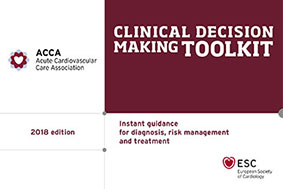updated by Lene Rørholm Pedersen and Eva Prescott, 24 August 2021
In 54 ESC member countries there were 19.9 million new cases of cardiovascular disease (CVD) and 108.6 million people living with CVD in 2017. Ischaemic heart disease (IHD) was the most common manifestation of CVD with 3.6 million new cases and 34.9 million people living with IHD. CVD is the most common cause of death in Europe accounting for 4.1 million deaths (2.2 mio in females, 1,9 mio in males) each year; corresponding to 47% of all deaths among women and 39% among men. IHD and cerebrovascular disease are the most common causes of cardiovascular death and IHD accounts for 1.67 million deaths corresponding to 17% and 18% of all deaths in men and women, respectively. Notably, more than twice as many men as women under the age of 70 years die from IHD. There at considerable differences in the CVD burden across Europe with an almost five-fold increase from lowest to highest. Overall, the burden of CVD is larger in middle-income regions of ESC with higher age-adjusted CVD death rates and disability adjusted life years attributed to CVD [1].
The age-adjusted CVD incidence has declined rapidly in almost all Western European countries with up to 30-50% reduction in the last 10-15 years in some countries. The decline is seen in both men and women and the majority can be attributed to improvements in primary and secondary prevention. However, not all risk factors show a beneficial trend. While smoking rates and population cholesterol levels have gone down, obesity and diabetes are increasing, causing some concern of whether the beneficial development seen in recent decades may not continue or even be reversed. Psychosocial stress, such as depression, anxiety and burn-out, which are now recognized as important contributors to CVD incidence and prognosis, are not declining. Also, disparities in CVD mortality regional, as well as national socioeconomic and other disparities remain high and even increasing [1]. According to the World Health Organization, CVD is responsible for the majority of the global loss of disability adjusted life-years. The most important modifiable risk factors responsible for global CVD burden are - in order of ranking - systolic blood pressure, diet, LDL-cholesterol, smoking, obesity, and plasma glucose but also environmental risks linked to climate changes are among the top-ranking modifiable risk factors [2].
Since 1995-1996 the cross-sectional EUROASPIRE (European Action on Secondary and Primary Prevention to Reduce Events) study has evaluated the European prevention effort in patients <80 years with coronary disease (i.e. coronary artery bypass graft, percutaneous coronary intervention or an acute coronary syndrome). In the most recent cohort, EUROASPIRE V (2016-2017), 131 centres from 27 European countries were included, 16,208 medical records were reviewed, and 8261 patients were interviewed. The median time between index event and interview was 1.1 years [3].
EUROASPIRE has documented that cardiovascular risk factors still go undiagnosed and that risk factor control in secondary prevention remains suboptimal. Based on interviews 78% and 84% of the participants in EUROASPIRE V were treated with anti-hypertensive and lipid-lowering drugs, respectively. At the time of the interview 42.2% had a blood pressure ≥ 140/90 and only 29% had LDL cholesterol ≤ 1.8 mmol/L [4]. Nevertheless, the latter is an improvement compared to EUROASPIRE IV (2012-2013) where only 19.5% reached the treatment target [4]. Twenty-nine percent of the participants in EUROASPIRE V had self-reported diabetes and of these, only 53% had Hba1c < 7%. At the time of the interview 4440 participants with unknown glycaemic status underwent an oral glucose tolerance test; 41.1% were dysglycaemic, i.e. had either newly diagnosed diabetes or impaired glucose tolerance [3,5].
In the EUROASPIRE V cohort 82% were overweight (BMI>25 kg/m2) and 38% were obese (BMI > 30 kg/m2). Central obesity (waist circumference ≥102 cm in men or ≥88 cm in women) was seen in 59% of the participants. These numbers have increased compared to the prior EUROASPIRE cohorts I-III, but are largely the same as EUROASPIRE IV 82.1% overweight, 37.6% obese and 58.2% centrally obese [4].Two-thirds (66%) of the participants (men 63%; women 73%) in EUROASPIRE V were not achieving the defined physical activity target. One-third (35%) reported “performing planned physical activity to increase physical fitness”, but only 16% performed vigorous activities >20 min at least 3 times weekly [3]. Nineteen percent were smokers at the time of the interview and 55% of the were persistent smokers. Most smokers had received advice to stop smoking. Of the 46% advised to participate in a cardiac rehabilitation programme 69% attended at least half the sessions [3].
Women constitute 25.8% of the EUROASPIRE V population and results show that women, overall, have a worse risk factor control compared with men despite little gender differences in cardiovascular medication intake [6]. Women were more likely to be non-smokers and no gender differences were seen in blood pressure on target. However, women were more likely to be obese, they were less physically active, a larger proportion did not reach LDL cholesterol target levels and women with self-reported type 2 diabetes were less likely to reach target HbA1c.
Thus, while preventive cardiology has been a great success measured by the age-adjusted decline in CVD mortality, there is still ample room for improvement. Registry studies have found that 18% of patients with myocardial infarction suffer recurrent events within the first year [7]. It has been estimated that this could be more than halved if secondary prevention measures were more rigorously implemented.
EAPC Prevention in your Country
Country reports provided by National CVD Prevention Coordinators in ESC Member Countries.





 Our mission: To reduce the burden of cardiovascular disease.
Our mission: To reduce the burden of cardiovascular disease.